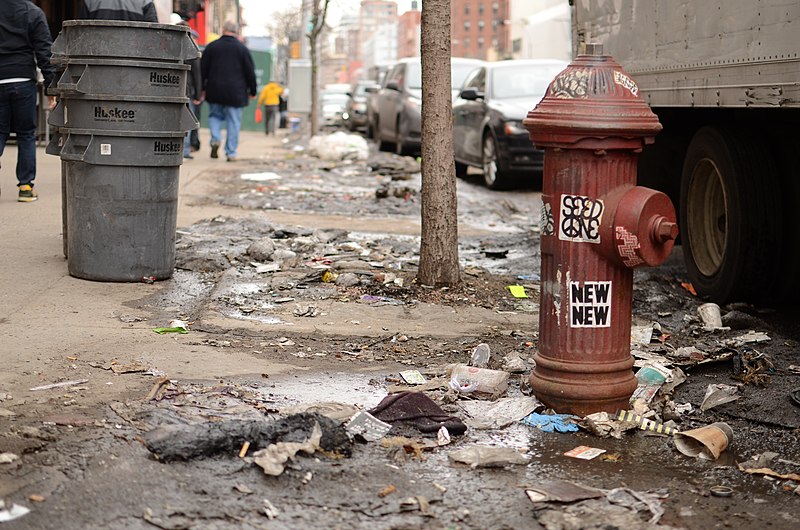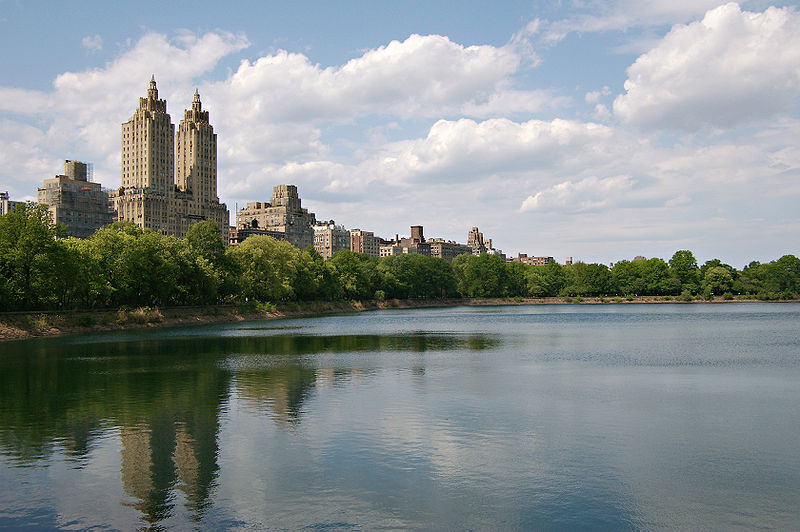Just three. At least, three that I remember. The first one, and probably the most significant, took place far from New York, in the tranquil Chicago suburb of Evanston, where I grew up. It was the year after my college graduation, when I was marking time hoping for a Fulbright scholarship that would get me to Europe, while reading and rereading the English poets and taking beginning Greek with Professor Dorjahn at Northwestern. Dorjahn, the head of the tiny Classics Department, was a crusty and demanding teacher who loved teaching this course, the gateway to Greek and the classics. He had been known to reduce sensitive females to tears, so in the first semester was relieved to find only hardy males in this class of five. A staunch Republican, he thought nothing of denouncing President Truman as a haberdasher out of his depth, but for all his crustiness and prejudices, we loved him. Which, come to think of it, has nothing to do with suicides.
As the months wore on, the gray vapors of depression began to infiltrate my being. Reading poetry and taking Greek was fine, but it was hardly a life in itself. I was living at home after four years of college elsewhere, had lost contact with my Evanston friends, dated rarely, had little social life. Not being used to introspection – at least, not the kind that probes deep into one’s own psyche – I found myself borne slowly on the current of my moods. Attracted at this point to neither men nor women, I was in a strange limbo of indifference and abandonment, one that even today I have trouble understanding. Excitement over something I was reading, or my progress in learning Greek, alternated with withdrawal, with alienation from everyone and everything around me. And of all this, not a word to anyone. Then I would snap out of it, read more, learn more; but sooner or later the gray mood crept back in.
One evening that fall or winter, when that mood was upon me, without further reflection and almost like a sleepwalker I slipped out of the house unnoticed by my family, went to the garage, and in the darkness sat in the driver’s seat of my father’s car and, after a few moments of hesitation, turned the motor on. The garage doors were shut, so monoxide poisoning was possible, even probable, and I knew it. But the motor started with such a roar that it alarmed me and, fearing discovery, I quickly shut it off. I then left the garage and slipped back into the house, still unnoticed by anyone. Was I relieved, alarmed, amused by this fiasco? I don’t recall. Was it just a game that I intended to lose? I doubt it. The risk was real, and if the motor had come on with a gentle purr, I could well have seen the matter through.
After that, sensing a need for change, I took a part-time afternoon job at a local insurance company, retrieving applications from the files when the staff had need of them: a menial job, but one that shook me free of those gray vapors. If the Fulbright didn’t come through, I resolved to go to New York and find a job; I had to get free of family and a suburban life that depressed me. But the Fulbright did finally come through, and from then on I was feverishly brushing up my French, with no time for either sex or depression. So ends the account of my first suicide, hitherto untold to anyone.
 |
A suicide prevention poster of the Department of Defense.
Suicide is common among returning vets. |
Fast forward now to 1965. I’m a college French teacher now in New York, unattached, a very unpublished poet, but with many friends, many interests, few of the latter related to teaching nineteen-year-olds French. My friend Vernon Newton got a volume of poetry published, and I was invited to a celebration of the event given by some mutual acquaintances. I went, found a friendly crowd imbibing wine, and there, prominently displayed on a bureau, the volume, of which I later received an autographed copy. Toward the end of the party it was obvious that the poet and some of his friends were going out to a dinner to which I was not invited. But another friend, John Anderson, was going out with some other guests for dinner and invited me to join them; for some reason I refused.
Instead, I went home, lapsed again into the gray mood of depression, and without reflection turned the oven on without lighting the gas, kneeled down, and stuck my head in, covering it with a towel so as to keep the gas from spreading and dissipating. I remained in this awkward position for quite a while, breathing in deeply and hoping to gently pass out and shuffle off this mortal coil. But I remained stubbornly alive and alert, and finally, deciding the whole business was ridiculous, got up, turned the gas off, and went to bed.
Why had I done this? Jealous of my published friend? I don’t think so; I wished Vernon and his volume well. Depressed because I was not invited to the dinner party? Maybe, but neither was John Anderson, who invited me to join his friends for dinner. More to the point, I suspect, was my dislike of teaching – a dislike whose growing intensity I dared not admit to myself – and my frustrated wish for a relationship, as opposed to occasional sex with strangers. It was still the era of the Mafia-run gay bars, crowded on Saturday nights, smoke-filled, and guarded by a thug at the door: not my preferred habitat by a long shot. And my frustration as an unpublished writer probably counted for something as well. Yet even today, with hindsight, I can’t explain the incident adequately; it simply happened.
“History repeats itself, first as tragedy, second as farce,” Karl Marx famously observed. So it was with me and suicide, if we grant the first two attempts the grandiose label of tragedy; the third was certainly farce. It must have come a year or two after the second suicide. I had contemplated various possibilities, albeit with a certain detachment. Suicide by jumping out a window was no good; I lived in a third-story apartment. Besides, the dizzying plunge would be terrifying, and my splat on the pavement below might injure some passerby with whom I had no quarrel; pedestrian safety must be considered. Suicide by revolver would be quick, neat, and clean, and once you twitched the trigger, no chance for reappraisal; alas, I had no revolver. Finally I settled on a novel method: suicide by aspirin. Granted, I had never heard of it succeeding; in fact, I had never heard of it at all. But it seemed worth trying, and maybe, just maybe, it might work.
 |
Fine for headaches. But suicide???
Ragesoss |
So one evening when that gray mood was upon me, I emptied a whole bottle of aspirin, swallowing one tablet after another, then went to bed and fell asleep, wondering if I would ever wake up. The next morning I did, unmistakably alive, but with a feeling of weakness, a foul taste of aspirin in my mouth, and a craving for ice cream, a craving like I had never known before, worthy of a pregnant woman, and specifically for vanilla. Too weak to go out, I phoned my friend Gene, told him I was under the weather and asked him to bring me the ice cream; no word, of course, of the aspirin. This he gladly did and, being a former ministerial student, he lingered a while and exhibited a most sympathetic bedside manner. After Gene left, I devoured the ice cream, probably a whole pint at least. It seemed to work wonders, since the aspirin taste diminished and I felt stronger by the minute. But that awful taste, the faintest hint of it, hung on for days. As did my sense of the ludicrous. Suicide by monoxide has a certain minimal dignity, and suicide by the oven stops just this side of the ridiculous. But let’s face it, suicide by aspirin plunges deep into the realm of absurdity.
Such was my third suicide. Often I escaped depression by simply going to bed and sleeping, a far better solution than alcohol or drugs. Then the gray vapors vanished, and with them the urge to suicide, owing to two changes: I quit teaching, I met my partner Bob. These games then faded in memory, became definitively a thing of the past.
Were these attempts simply a game, a toying with fate that I had no real intention of pushing through to completion? It’s hard to say. A game, perhaps, but always with risk. There are better, less dangerous games to play. But the games served a purpose; following each attempt came a long period of calm and equanimity totally free of depression. As Nietzsche observed, “The thought of suicide is a great consolation; it gets one through many a bad night.”
None of my friends or family had any inkling of all this, not one. And certainly not my students, since every Monday morning I showed up on the campus as well scrubbed as ever, ready to leaven the sodden weight of grammar with attempts at quicksilver wit.
Why do I now relate all this, having never revealed it before to anyone? Two reasons: it’s an ancient story, and with distance I see the humor. But what I don’t fully grasp to this day is the motivation, which I can only surmise. The young man of those years is in many ways a stranger to me, and a baffling one at that. How complicated we humans are, what a tangle of motives and frustrations, a mystery even more to ourselves than to others!
© 2021 Clifford Browder











